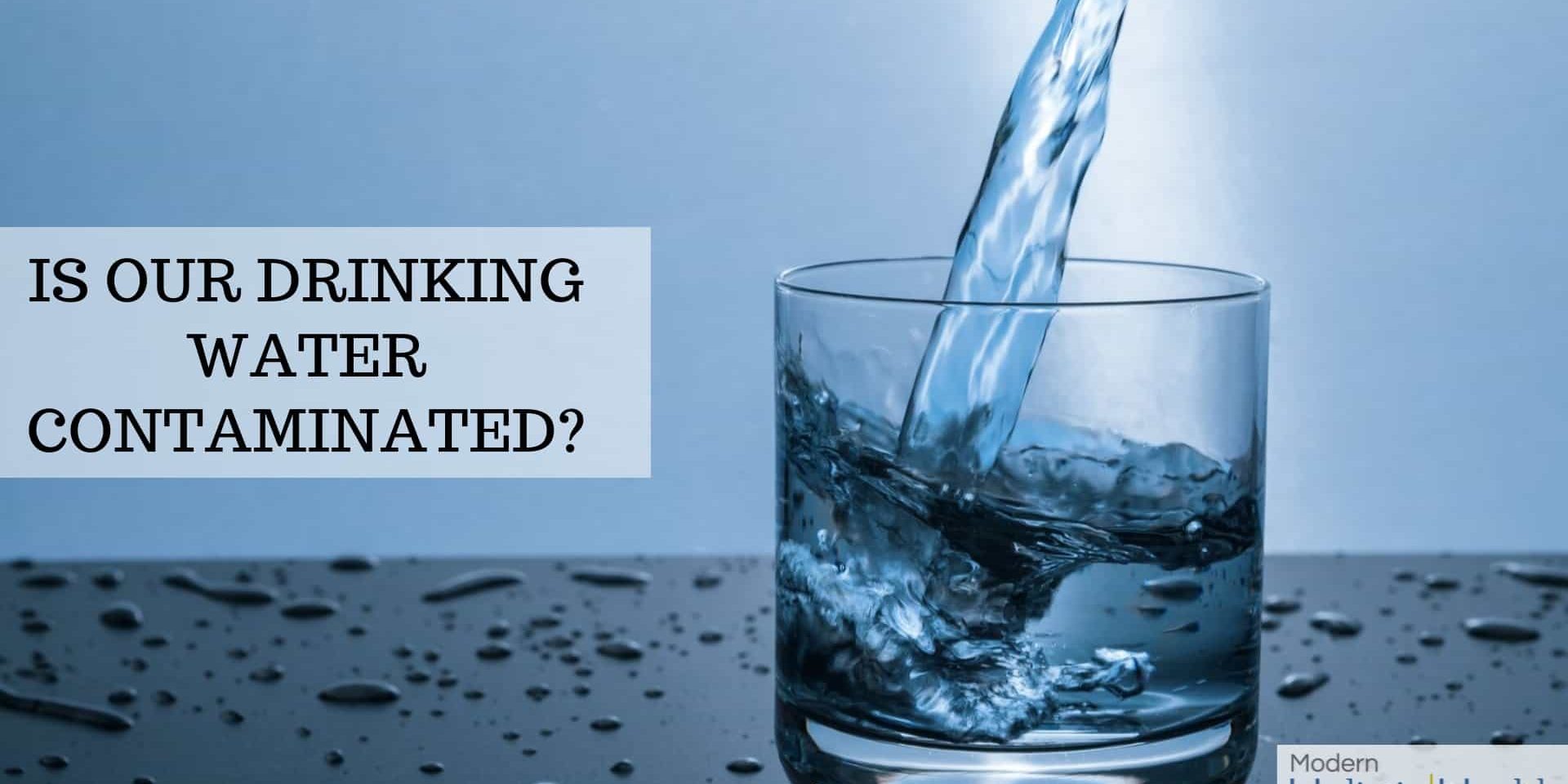Contaminated Drinking Water: Millions Of Americans At Risk, Report Finds

Table of Contents
Sources of Drinking Water Contamination in the US
The sources of contaminated drinking water in the US are multifaceted and complex, stemming from aging infrastructure, agricultural practices, and inadequate regulations.
Lead Contamination in Older Pipes
Lead pipes, prevalent in older infrastructure across many US cities, pose a significant threat, particularly to children. Lead contamination in drinking water can lead to serious health problems, including lead poisoning, developmental delays, and neurological damage. The long-term effects of lead exposure can be devastating.
- Cities with significant lead pipe problems: Flint, Michigan; Newark, New Jersey; Chicago, Illinois.
- Government initiatives: The EPA's Lead and Copper Rule Revisions aim to improve lead service line replacement programs. Many cities are investing in infrastructure upgrades, but progress is slow and funding often insufficient.
- Health effects of lead exposure: Developmental delays, learning disabilities, behavioral problems, reduced IQ, kidney damage, and anemia.
Agricultural Runoff and Chemical Contamination
Agricultural runoff containing fertilizers, pesticides, and herbicides contaminates water sources, leading to widespread water pollution. These chemicals can leach into groundwater and surface water, posing a serious threat to drinking water quality. While government regulations exist, their effectiveness in preventing widespread contamination is often debated.
- Agricultural chemicals found in drinking water: Atrazine, glyphosate, nitrates.
- Effects on human health and the environment: Eutrophication (excessive algae growth), disruption of aquatic ecosystems, potential links to certain cancers and reproductive problems.
- Potential solutions: Implementing sustainable farming practices, reducing pesticide use, improving buffer zones between agricultural lands and water sources.
Microbial Contamination and Waterborne Diseases
Bacteria, viruses, and parasites can contaminate drinking water supplies, leading to waterborne diseases. Outbreaks of waterborne illnesses, such as E. coli and cholera, can have devastating consequences, particularly in communities with limited access to clean water.
- Examples of common waterborne diseases: E. coli, Salmonella, Giardia, Cryptosporidium, Cholera.
- Symptoms: Diarrhea, vomiting, fever, abdominal cramps, dehydration.
- Prevention methods: Boiling water for at least one minute, using water filters certified to remove bacteria and parasites.
The Impact of Contaminated Drinking Water on Public Health
The consequences of consuming contaminated drinking water are far-reaching and affect both individual and public health.
Short-Term and Long-Term Health Consequences
Contaminated drinking water can lead to a range of short-term and long-term health consequences.
- Specific health problems: Gastrointestinal illnesses, kidney damage, liver damage, neurological problems, certain types of cancer.
Disproportionate Impact on Vulnerable Populations
Low-income communities and marginalized groups often bear the brunt of unsafe drinking water, facing higher risks of exposure and limited access to clean water solutions. This highlights the issue of environmental justice and the need for equitable access to safe drinking water for all.
- Examples of communities facing water crises: Many Native American reservations, low-income neighborhoods in urban areas.
- Reasons for disparities: Lack of funding for infrastructure improvements, limited access to resources, historical injustices.
Protecting Yourself from Contaminated Drinking Water
Taking proactive steps to protect yourself and your family from contaminated drinking water is essential.
Home Water Filtration Systems
Investing in a home water filtration system can significantly reduce your exposure to contaminants. Various options cater to different needs and budgets.
- Types of water filters: Carbon filters (remove chlorine, sediment, some organic chemicals), reverse osmosis (removes a wider range of contaminants, including salts and minerals), activated alumina (removes arsenic and fluoride).
- Pros and cons: Consider cost, effectiveness against specific contaminants, maintenance requirements.
Boiling Water and Other Safe Practices
Boiling water is a simple and effective way to kill many harmful bacteria and viruses.
- Steps for safely boiling water: Bring water to a rolling boil for at least one minute. Let it cool before drinking.
- Alternative methods: Water purification tablets, using a portable water filter.
Advocating for Clean Water Initiatives
Support organizations working to improve water quality and engage in political action to advocate for stronger water safety regulations.
- Examples of organizations: Environmental Working Group (EWG), Natural Resources Defense Council (NRDC).
- Ways to contact elected officials: Write letters, attend town hall meetings, support legislation promoting clean water initiatives.
Conclusion: Taking Action to Ensure Safe Drinking Water
This report’s findings underscore the urgent need to address the widespread problem of contaminated drinking water in the US. Millions of Americans face serious health risks due to water contamination, and inaction will have devastating long-term consequences. Learn about your local water quality, invest in a home water filtration system, and advocate for stronger water safety regulations. Don't wait – protect yourself and your community from the dangers of contaminated drinking water. Take action today to ensure access to safe drinking water for all.

Featured Posts
-
 Chandler Parsons And The Mavs Was Losing Brunson Worse Than Trading Doncic
May 16, 2025
Chandler Parsons And The Mavs Was Losing Brunson Worse Than Trading Doncic
May 16, 2025 -
 Barcelonas Fiery Response Accusations Of Inappropriate Behavior Against Tebas And La Liga
May 16, 2025
Barcelonas Fiery Response Accusations Of Inappropriate Behavior Against Tebas And La Liga
May 16, 2025 -
 Anthony Edwards And His Childs Mother A Custody Battle
May 16, 2025
Anthony Edwards And His Childs Mother A Custody Battle
May 16, 2025 -
 Rapids Win Cole Bassett Scores Zack Steffen Makes 12 Saves
May 16, 2025
Rapids Win Cole Bassett Scores Zack Steffen Makes 12 Saves
May 16, 2025 -
 Dominate Your Mlb Dfs Contest May 8th Sleeper Picks And Hitter To Avoid
May 16, 2025
Dominate Your Mlb Dfs Contest May 8th Sleeper Picks And Hitter To Avoid
May 16, 2025
